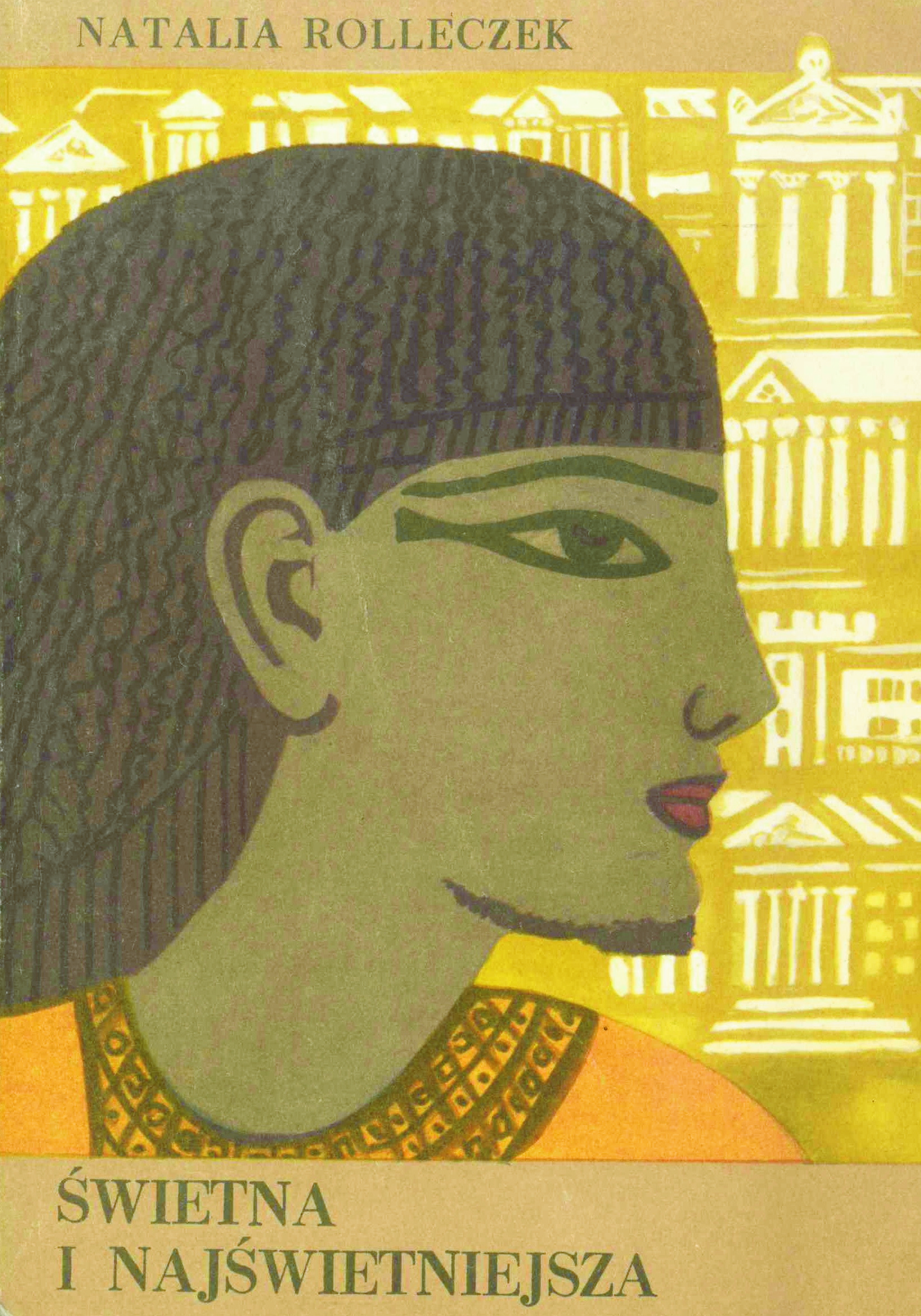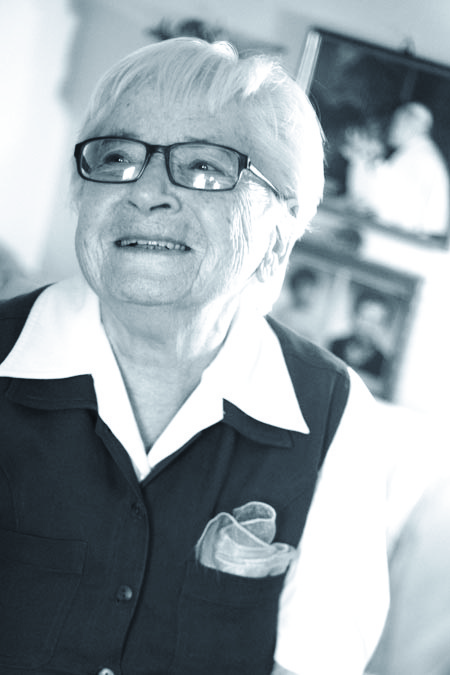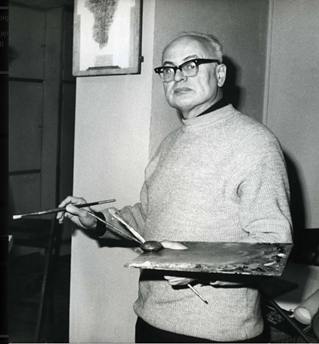Title of the work
Country of the First Edition
Country/countries of popularity
Original Language
First Edition Date
First Edition Details
Natalia Rolleczek, Świetna i najświetniejsza. Warszawa: Nasza Księgarnia, 1979, 448 pp.
ISBN
Genre
Historical fiction
Novels
Target Audience
Crossover (Children, teenagers, young adults)
Cover

Cover design and illustrations by Zbigniew Łoskot. Courtesy of Nasza Księgarnia.
Author of the Entry:
Summary: Ilona Szewczyk, University of Warsaw, szewczyk@al.uw.edu.pl
Analysis: Marta Pszczolińska, University of Warsaw, m.pszczolinska@al.uw.edu.pl
Peer-reviewer of the Entry:
Katarzyna Marciniak, University of Warsaw, kamar@al.uw.edu.pl
Elżbieta Olechowska, University of Warsaw, elzbieta.olechowska@gmail.com

Photograph courtesy of its Author, Paulina Musiał, retrieved from popkulturalny.blog.polityka.pl/2009/10/23/natalia- rolleczek/ (this website is no longer available).
Natalia Rolleczek (Author)
Born in 1919 in Zakopane (a ski resort in the Polish Tatras). A novelist and playwright. In the 1930s, she lived several years in an orphanage run by Felician Sisters. During WW2 she was active in the anti-Nazi resistance in Kraków (Cracow). In 1950 she published a play Mój zięć marksista [My Marxist Son-in-Law]. In 1953 she described her pre-war orphanage experience in an autobiographical novel Drewniany różaniec [A Wooden Rosary], 1953, with its sequel Oblubienice [The Brides], 1955. Used by communists in their campaign against the Catholic Church, both books were widely promoted and made into a film in 1964; Rolleczek played her own character in the movie. A versatile author of books for children and adults, equally interested in the ancient and in the modern world. Since 1954, member of the Polish Writers’ Union. In 1980 she received an award from the Prime Minister for her books for children and youth.
Sources:
"Natalia Rolleczek", in Jadwiga Czachowska and Alicja Szałgan, eds., Współcześni polscy pisarze i badacze literatury. Słownik biobibliograficzny, vol. 7: R–S, Warszawa: Wydawnictwa Szkolne i Pedagogiczne, 2001, 63–64.
Katarzyna Bielas, "Liczę na czyściec" [Interview with the Author], Gazeta Wyborcza – Wysokie Obcasy, published December 18, 2009, archiwum.wyborcza.pl (accessed: January 22, 2021).
Katarzyna Bielas, "Natalia Rolleczek nie żyje. W Drewnianym różańcu opisała trudne dzieciństwo spędzone w sierocińcu prowadzonym przez zakonnice", wyskieobcasy.pl, published December 27, 2009 (accessed: January 22, 2021).
Bio prepared by Ilona Szewczyk, University of Warsaw, szewczyk@al.uw.edu.pl

Photograph courtesy of Jacek Łoskot, the Artist's Son.
Zbigniew Łoskot
, 1922 - 1997
(Illustrator)
Zbigniew Łoskot (1922–1997) was a Polish painter, illustrator, printmaker and graphic designer. He was born in Warsaw, where he passed his high school final exam in clandestine courses during the Nazi occupation in 1942. He cooperated with the magazine Sztuka i Naród [Art and Nation]. He graduated from the Faculty of Painting at the Akademia Sztuk Pięknych im. Jana Matejki (Jan Matejko Academy of Fine Arts) in Cracow in 1949 (he finalized his degree in 1954). He was active in various areas and techniques of art, such as monumental wall painting, frescoes, sgraffito, mosaics, stained glass, easel painting (oil, tempera), woodcut, linocut or drypoint. He was well known for his sacred art – he designed and decorated many churches and chapels rebuilt and built after WW2, including the Primate’s of Poland chapel in the Warsaw Metropolitan Cathedral, all together, ten chapels and over twenty churches.
As an illustrator, he cooperated with many publishers, including Pallotinum, where he designed the cover and jacket of the Millennium Bible – the most famous 20th-cent. Polish edition of the Bible. Among other publishing houses, he worked for were also Iskry, KAW, PAX and Nasza Księgarnia, where he illustrated mainly books for children. He exhibited multiple times in Poland and abroad in individual or group shows. His works are held by the Vatican Museums, various Polish museums, Éditions du Dialogue founded in Paris by Polish Pallottines in 1966, and Pallottine collections in Rome.
In 1972, Nasza Księgarnia published Kolorowy świat – ilustracje w książkach „Naszej Księgarni” 1921–71 [Coloured World – illustrations in books by „Nasza Księgarnia”] including also works by Zbigniew Łoskot with the child reader in mind.
Source:
Official website (accessed: February 25, 2022).
Bio prepared by Marta Pszczolińska, University of Warsaw, m.pszczolinska@al.uw.edu.pl
Summary
Based on: Katarzyna Marciniak, Elżbieta Olechowska, Joanna Kłos, Michał Kucharski (eds.), Polish Literature for Children & Young Adults Inspired by Classical Antiquity: A Catalogue, Faculty of “Artes Liberales”, Warsaw: University of Warsaw, 2013, 444 pp.
Tyche, the goddess of destiny plays with the fate of two Greek siblings, Apion and Ammonia who meet two young Egyptian boys Enum and Uni; the former is the son of a distressed dignitary Theta, the latter lives his life in poverty as a dyer, unaware of the identity of his mother, the most powerful woman in Alexandria, Claudia Coponia. Apion, taken away from the merchant Poseidonios, begins a new life at Enum’s place as his companion. Soon his sister Ammonia joins him. Formerly working as a weaver, she becomes Enum’s closest friend. Their friendship slowly turns into romantic feelings with no future as Enum’s father financial losses force him to dismiss all servants. Goddess of Fate separates Enum and Ammonia, sending the girl to the house of a rich Jewish banker, where she becomes a teacher/governess to his three daughters.
The same mischievous goddess Tyche allows Uni to turn his life around, become a respected scribe at the Library of Alexandria. Despite her gentle treatment of Uni, Tyche behaves cruelly bringing Enum’s life to a bitter end. He dies of injuries sustained during an attempt to save precious manuscripts from the fire of the Great Library; the fire caused accidentally by Julius Caesar when he tried to set his own ships on fire during the war in Egypt in 48 BC. serves only as a background event to the novel, not as part of the plot. After Enum’s death, Ammonia, who was Uni’s love from first sight, eventually agrees to marry him.
Alexandria with all its monuments, temples, private houses, with its remarkable wealth and as remarkable poverty provides the background shown in numerous minor strands of the story reflecting everyday life of Romans, Greeks and Egyptians of the time.
Analysis
The author makes the city of Alexandria – λαμπρά καὶ λαμπροτάτη [illustrious and most illustrious] – the protagonist of the novel. These attributes are used as the title of the novel, however, the best times of its glory and wealth are gone. Still opulent and lively, the city is home for people of different cultures, religions and social status. The decline and fall of Egyptian families, the greed and injustices of Roman administrators, the deterioration of the situation of Greeks, the wealth of Jewish Hellenistic bankers, and the miserable fate of Syrian, Phoenician, or African workers figure prominently in the novel as part of the background. Descriptions of various aspects of the daily life of characters of different origin, education, occupation, religion, social class, and cultures make the reader aware of this multicultural urban and suburban reality's complexity. Alexandria is not only shown as the capital of wisdom and science. The country's Roman occupation made the city and the people increasingly poorer, which is evident through the fates of the protagonists. Rome is seen in Egypt as a cavernous throat, more voracious than Polyphemus’ mouth. Even the Great Library – the most important institution in Alexandria – is in trouble, it has many difficulties of an economic nature, and as a result, its status and importance diminish. The author shows historical and sociopolitical changes that took place after Cleopatra’s death from the young generation's perspective. There is information that Uni, as a newborn, was found 9 months after the night of the fire during Caesar’s civil war, i.e. in 48 B.C. In the novel, Uni is a young man, and Gallus is a prefect of Egypt (30–26 B.C.), Augustus’ rule is well established, and Horace writes his poetry under the patronage of the new deal in Rome. The author was aware of some historical inaccuracies (e.g. Gallus is sent to Ethiopia with a mission), which were made to recreate the atmosphere of the place rather than retain strict chronological details.
However, Egypt is under Roman dominion, the Graeco-Macedonian roots of the city and traces of 300 years of colonization are evident as the Greekness is all around. The architecture, art, institution of the Library, Greek beliefs and mythology are omnipresent. Homer is still the most appreciated author, and all must know his works. Comparisons to Homeric protagonists are common and numerous, and even non-Greek characters use mythical heroes and Greek gods to express themselves. Egyptians, Syrians, Nabataeans, and Jews know Greek mythology and sometimes even call upon Greek gods when in need. Uni, hiding among paupers, knows an old man who recites Homer by the fire. For a rejected man, this is the best consolation, and he compares himself to Odysseus, naked and dirty, coming muddied to the presence of Nausicaa.
The child protagonists come from different families and cultures. Enum, a boy of ancient Egyptian origin, grows up completely alone closed in his room as he becomes disabled and is ashamed of being dependent. When by accident Lucius, a son of his father’s Roman guest, enters his chamber, the boys get to know each other and become friends despite their differences. Lucius tells Enum about his grammar school in Rome, which is a nightmare for pupils and teachers. Enum tells Lucius about arithmetical exercises involving counting mummies that he had to do. Both know Homer very well, and for Lucius, Herodotus is an even greater inspiration as well as τὰ περὶ τοῦ Ὠκεανοῦ [ta peri tou Okeanou] by Pytheas of Massalia. The Roman boy wants αἰὲν ἀριστεύειν καὶ ὑπείροχον ἔμμεναι ἄλλων – ever to be the best, to lead in whatsoever things are true* which is today the motto of the University of St. Andrews. He cites what Peleus said to Achilles: one must despise the small and pale life to gain moments of immortal glory. He means he had decided to travel and explore, and his dream is to find the Nile's springs, which he makes his goal later on. At first, Enum envies him his health and possibilities, but he can get to know the world and not feel alone, thanks to him. When Greek siblings appear at Enum’s house, he is happy to have company and to hear Homer in Greek. He likes them both, especially that he regains his health while rescuing a beautiful girl from a snake by killing it with a plate. He is then compared to Heracles, but what is the most important for him – he can explore the city by himself, feel life and love, and eventually go to the Great Library to read Menander’s comedies. Yet, at the same time, he realizes how much his family's situation has worsened during his illness. As Enum grows up, his dream about the Library comes true as he starts working there as an editor and corrector of proper versions of Greek texts. Greek children – orphans of a Milesian father – work hard for their upkeep and are a symbol of Graeco-Macedonian society which loses its position and wealth while preserving its freedom. The boy is treated like a slave, and the girl works hard till a rich Jewish entrepreneur hires her to teach his daughters. The Jewish girls need to get familiar with Greek culture, mythology, and literature. Their father aspires to be an educated Hellenistic Jew and does not want to be ashamed of their ignorance. The novel also presents the story of orphans without any roots – foundlings left on a garbage dump. One such foundling is Uni, raised by a Syrian foster father, poor and humiliated but still kind-hearted and honest, the second – a baby girl, taken by Uni, who is named Artemis and eventually grows up cared for by Enum’s father.
Black-and-white illustrations by Zbigniew Łoskot accompany the text, drawn in a raw style of fine lines. Just as Alexandria was a melting pot of numerous cultures, similarly, the illustrator mixes Hellenistic and Roman elements (e.g. meander motif, simplified style of pottery) with the Egyptian style of drawing, e.g., in-profile, with hieroglyphic motifs. Buildings or artifacts, such as coins or texts on papyri are also included in the illustrations.
* Murray, Robert Fuller, “Aien aristeuein” in: Robert F. Murray: his Poems, with a memoir by Andrew Lang (London: Longmans, Green, 1894).
Further Reading
Bielas, Katarzyna, "Liczę na czyściec" [Interview with the Author], Gazeta Wyborcza – Wysokie Obcasy, published December 18, 2009, archiwum.wyborcza.pl (accessed: January 22, 2021).
Łukaszewicz, Adam, Egipt Greków i Rzymian, Warszawa: Książka i Wiedza, 2006.


